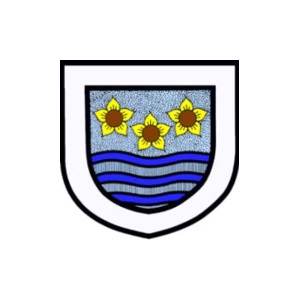Design and Technology
Through our design and technology curriculum we aim to give pupils opportunities to make links to the real world through exploration of different designers and their works. We strive to teach in a way that allows pupils to develop their creativity and gives them the practical skills needed to perform everyday tasks confidently and successfully. We aim to give meaning to what they do by creating a range of structures, mechanisms, textiles, electrical systems and food products that have a purpose. Children are taught where our food comes from and are encouraged to develop a healthy lifestyle, while designing and creating food products. We teach the knowledge, understanding and skills needed to design, make and evaluate a product in practical ways. Whenever possible the design process is relevant and rooted in real life to give a relevant context to their learning. Children are given choice and a range of tools to choose freely from. Children are taught to evaluate their own products against design criteria and are taught the relevant technical vocabulary.
Art and Design and Technology are taught in half termly blocks, with a lesson in either subject once per week. Some art lessons are linked, whenever possible, to topics being covered in other areas. We have designed our D/T curriculum to ensure that products made are meaningful and, wherever possible, have a purpose/use and that the skills acquired will be of use.
This is our two-year long-term plan for Art and Design, including a brief overview of each unit:
|
DESIGN & TECHNOLOGY OVERVIEW |
|
|
|
|
|
|
|
|
Year 1/2A |
Year 1/2B |
Year 3/4A |
Year 3/4B |
Year 5/6A |
Year 5/6B |
|
AUTUMN |
Vehicles MECHANISMS |
Moving Minibeasts MECHANISMS |
American Food COOKING & NUTRITION |
Alarms MECHANISMS |
Birdhouse Builders CONSTRUCTION |
Fairground MECHANISMS
|
|
SPRING |
Puppets MATERIALS/TEXTILES |
Eat More Fruit and Vegetables COOKING & NUTRITION |
Functions of Fabric MATERIALS |
Making Mini Greenhouses CONSTRUCTION
|
Programming Pioneers MECHANISMS |
Burgers COOKING & NUTRITION |
|
SUMMER |
Seaside Snacks COOKING & NUTRITION |
Stable Structures CONSTRUCTION MATERIALS |
Pencil Cases TEXTILES |
How can we design and make a small jewellery container? MOULDABLE MATERIALS |
Funky Furnishings TEXTILES |
Making African Instruments MOULDABLE MATERIALS |
Expectations for the children's progression in Design and Technology can be accessed by clicking the link below:
https://crosscanonby-primary-school.schudio.com/files/documents/Design_and_Technology.docx
This is an example of how progress in knowledge is developed throughout the children's time in our primary school - 'Evaluating their designing and making':
|
DESIGN AND TECHNOLOGY NATIONAL CURRICULUM OBJECTIVES |
EYFS |
YEAR 1 |
YEAR 2 |
YEAR 3 |
YEAR 4 |
YEAR 5 |
YEAR 6 |
|
EVALUATING
Explore and evaluate a range of existing products evaluate their ideas and products against design criteria
|
Share their creations, explaining the process they have used.
Return to and build on their previous learning, refining ideas and developing their ability to represent them. |
Describe how something works
Explain what works well and not so well in the model they have made
Begin to evaluate their products as they are developed, identifying strengths and possible changes they might make. |
Evaluate their work against their design criteria.
Look at a range of existing products and what they like and dislike about products and why.
Start to evaluate their products as they are developed, identifying strengths and possible changes they might make.
With confidence talk about their ideas, saying what they like and dislike about their product. |
Explain how to improve a finished model
Know why a model has or has not been successful
Evaluate their product against their original design criteria (e.g. how well it meets its intended purpose).
Begin to disassemble and evaluate familiar products and consider the views of others to improve them.
Evaluate the key designs of individuals in DT has helped shaped the world |
Evaluate and suggest improvements for designs
Evaluate products for both their purpose and appearance
Evaluate their own and others work
Evaluate their product, carrying out appropriate tests.
Evaluate their product both during and at the end of the assignment.
Present a product in an interesting way
Be able to disassemble and evaluate familiar products and consider the views of others to improve them |
Suggest alternative plans; outlining the positive features and drawbacks
Evaluate appearance and function against original criteria
Begin to evaluate their product personally and seek evaluation from others.
Evaluate a product against original design specifications and by carrying out tests |
Test and evaluate designed products with specified audience where possible
Explain how products should be stored and give reasons
Evaluate product against clear criteria
Evaluate their work both during and at the end of the assignment.
Record their evaluations using drawing with labels |
